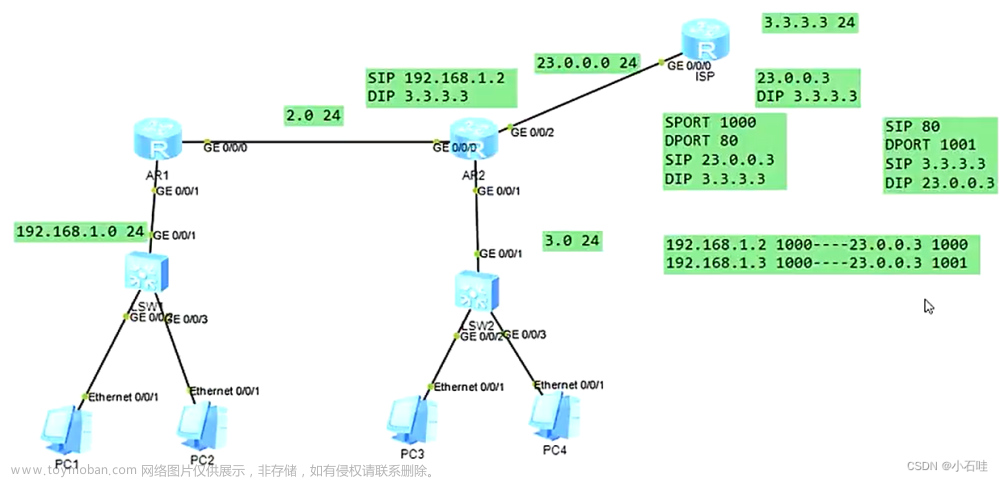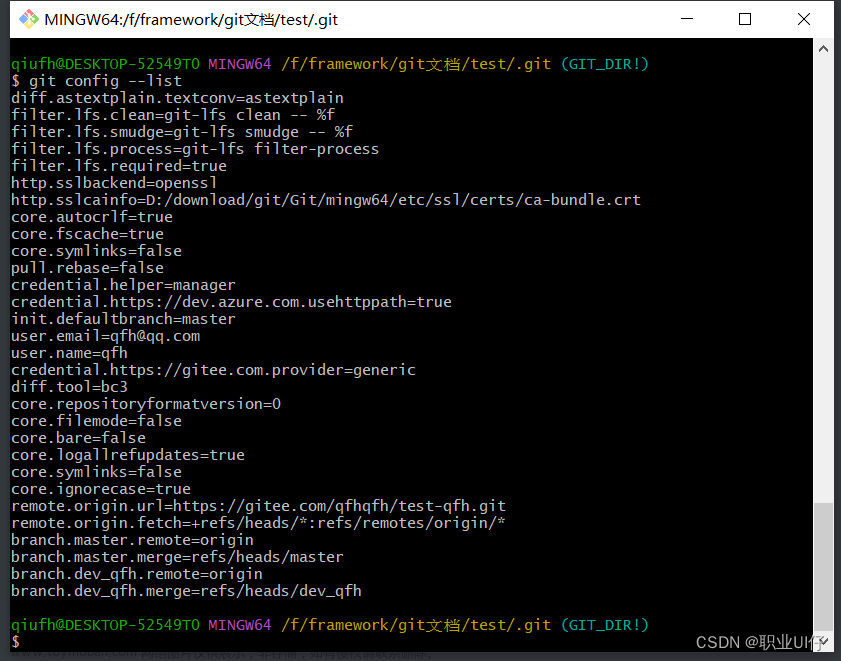Linux文件管理命令集(CP指令篇)
如下为笔者总结出在linux中最常用的CP指令集
🌟希望能够帮助正在Linux路上奋斗的你🌟
1. cp(copy)
复制文件或目录文章来源:https://www.toymoban.com/news/detail-435648.html
cp filename.py /workspace/test/
#复制filename.py文件到/workspace/test/路径文件夹下
cp -r [directory] /workspace/test/
#复制[directory]目录及其内容到/workspace/test/路径文件夹下
| 短选项 | 长选项 | 描述 |
|---|---|---|
-a |
--archive |
复制文件或目录,保留链接、文件属性,并复制目录下的所有内容;等同于-dpR参数组合 |
-b |
--backup=CONTROL |
创建备份文件,若目标文件已经存在,添加一个备份拓展名;备份文件的类型由选项CONTROL指定,默认为none |
-f |
--force |
强制复制文件或目录,不询问 |
-i |
--interactive |
复制文件或目录前先询问是否覆盖 |
-n |
--no-clobber |
不覆盖已经存在的文件,不进行复制操作 |
-p |
--preserve |
保留文件属性,包括所有权、访问时间、修改时间和权限 |
-R |
--recursive |
递归复制整个目录及子目录;若要拷贝目录下所有内容,必须使用此选项 |
-s |
--symbolic-link |
复制符号链接本身而非链接的目标文件 |
-S |
--suffix=SUFFIX |
为备份拓展名设置指定的拓展名 |
-t |
--target-directory=DIRECTORY |
将文件或目录复制到目标目录中 |
-T |
--no-target-directory |
复制多个源文件时,将目标视为一个普通文件而不是目录 |
-u |
--update |
仅复制源文件更新且文件大小不同或者目标文件不存在的文件 |
-v |
--verbose |
显示详细信息 |
-- |
--help |
显示帮助信息 |
-- |
--version |
显示版本信息 |
下述为cp命令详细选项(--help)文章来源地址https://www.toymoban.com/news/detail-435648.html
Usage: cp [OPTION]... [-T] SOURCE DEST
or: cp [OPTION]... SOURCE... DIRECTORY
or: cp [OPTION]... -t DIRECTORY SOURCE...
Copy SOURCE to DEST, or multiple SOURCE(s) to DIRECTORY.
Mandatory arguments to long options are mandatory for short options too.
-a, --archive same as -dR --preserve=all
--attributes-only don't copy the file data, just the attributes
--backup[=CONTROL] make a backup of each existing destination file
-b like --backup but does not accept an argument
--copy-contents copy contents of special files when recursive
-d same as --no-dereference --preserve=links
-f, --force if an existing destination file cannot be
opened, remove it and try again (this option
is ignored when the -n option is also used)
-i, --interactive prompt before overwrite (overrides a previous -n
option)
-H follow command-line symbolic links in SOURCE
-l, --link hard link files instead of copying
-L, --dereference always follow symbolic links in SOURCE
-n, --no-clobber do not overwrite an existing file (overrides
a previous -i option)
-P, --no-dereference never follow symbolic links in SOURCE
-p same as --preserve=mode,ownership,timestamps
--preserve[=ATTR_LIST] preserve the specified attributes (default:
mode,ownership,timestamps), if possible
additional attributes: context, links, xattr,
all
--no-preserve=ATTR_LIST don't preserve the specified attributes
--parents use full source file name under DIRECTORY
-R, -r, --recursive copy directories recursively
--reflink[=WHEN] control clone/CoW copies. See below
--remove-destination remove each existing destination file before
attempting to open it (contrast with --force)
--sparse=WHEN control creation of sparse files. See below
--strip-trailing-slashes remove any trailing slashes from each SOURCE
argument
-s, --symbolic-link make symbolic links instead of copying
-S, --suffix=SUFFIX override the usual backup suffix
-t, --target-directory=DIRECTORY copy all SOURCE arguments into DIRECTORY
-T, --no-target-directory treat DEST as a normal file
-u, --update copy only when the SOURCE file is newer
than the destination file or when the
destination file is missing
-v, --verbose explain what is being done
-x, --one-file-system stay on this file system
-Z set SELinux security context of destination
file to default type
--context[=CTX] like -Z, or if CTX is specified then set the
SELinux or SMACK security context to CTX
--help display this help and exit
--version output version information and exit
By default, sparse SOURCE files are detected by a crude heuristic and the
corresponding DEST file is made sparse as well. That is the behavior
selected by --sparse=auto. Specify --sparse=always to create a sparse DEST
file whenever the SOURCE file contains a long enough sequence of zero bytes.
Use --sparse=never to inhibit creation of sparse files.
When --reflink[=always] is specified, perform a lightweight copy, where the
data blocks are copied only when modified. If this is not possible the copy
fails, or if --reflink=auto is specified, fall back to a standard copy.
The backup suffix is '~', unless set with --suffix or SIMPLE_BACKUP_SUFFIX.
The version control method may be selected via the --backup option or through
the VERSION_CONTROL environment variable. Here are the values:
none, off never make backups (even if --backup is given)
numbered, t make numbered backups
existing, nil numbered if numbered backups exist, simple otherwise
simple, never always make simple backups
As a special case, cp makes a backup of SOURCE when the force and backup
options are given and SOURCE and DEST are the same name for an existing,
regular file.
GNU coreutils online help: <http://www.gnu.org/software/coreutils/>
Full documentation at: <http://www.gnu.org/software/coreutils/cp>
or available locally via: info '(coreutils) cp invocation'
***********************************************************
***********************************************************
用法: cp [选项]... [-T] 源文件 目标文件
或者: cp [选项]... 源文件... 目录
或者: cp [选项]... -t 目录 源文件...
将源文件复制到目标文件,或将多个源文件复制到目录。
长选项的强制参数对于短选项也是强制的。
-a, --archive 等同于 -dR --preserve=all
--attributes-only 只复制文件属性,不复制文件数据
--backup[=CONTROL] 对每个已存在的目标文件进行备份
-b 类似于 --backup,但不接受参数
--copy-contents 递归复制特殊文件的内容
-d 等同于 --no-dereference --preserve=links
-f, --force 如果无法打开一个已存在的目标文件,则删除它并重试(当 -n 选项同时使用时忽略此选项)
-i, --interactive 在覆盖之前询问用户是否确认覆盖(覆盖之前会先忽略之前的 -n 选项)
-H 在源文件中跟随命令行符号链接
-l, --link 创建硬链接而不是复制文件
-L, --dereference 总是跟随源文件中的符号链接
-n, --no-clobber 不覆盖已存在的文件(覆盖之前会先忽略之前的 -i 选项)
-P, --no-dereference 从不跟随源文件中的符号链接
-p 等同于 --preserve=mode,ownership,timestamps
--preserve[=ATTR_LIST] 尽可能保留指定的文件属性(默认为 mode、ownership、timestamps),其他属性: context, links, xattr, all
--no-preserve=ATTR_LIST 不保留指定的文件属性
--parents 在目录树结构下使用完整的文件名
-R, -r, --recursive 递归复制目录及其子目录中的内容
--reflink[=WHEN] 控制克隆/写时复制的操作。参见下方
--remove-destination 在每次尝试打开已存在的目标文件之前先删除它(与 --force 相反)
--sparse=WHEN 控制稀疏文件的创建。参见下方
--strip-trailing-slashes 移除每个源文件参数的尾部斜杠
-s, --symbolic-link 创建符号链接而不是复制文件
-S, --suffix=SUFFIX 覆盖默认的备份后缀(~)
-t, --target-directory=DIRECTORY 将所有源文件参数复制到目录中
-T, --no-target-directory 将 DEST 视为普通文件
-u, --update 当源文件更新时间比目标文件新,或者目标文件不存在时才进行复制
-v, --verbose 显示正在进行的操作
-x, --one-file-system 仅保留在同一文件系统上的文件
-Z 将目标文件的 SELinux 安全上下文设置为默认类型
--context[=CTX] 类似于 -Z,或者如果指定 CTX 则将 SELinux 或 SMACK 的安全上下文设置为 CTX
--help 显示此帮助信息并退出
--version 输出版本信息并退出
默认情况下,cp 会使用粗略的启发式方法检测源文件是否为稀疏文件,并在目标文件也是稀疏文件时使其成为稀疏文件。这是通过使用 --sparse=auto 选项选择的行为。指定 --sparse=always 以创建稀疏的目标文件,当源文件包含足够长的连续空字节时。使用 --sparse=never 来禁止创建稀疏文件。
当指定 --reflink[=always] 时,执行轻量级复制,只有数据块在被修改时才会被复制。如果不可能进行该操作,则复制失败。如果指定了 --reflink=auto,则回退到标准复制。
备份后缀为“~”,除非使用 --suffix 或 SIMPLE_BACKUP_SUFFIX 来设置。版本控制方法可以通过 --backup 选项或 VERSION_CONTROL 环境变量进行选择。以下是可选值:
none, off 不进行备份(即使给出了 --backup)
numbered, t 进行编号备份
existing, nil 如果存在编号备份,则进行编号备份,否则进行简单备份
simple, never 总是进行简单备份
作为特殊情况,当给出 -f 和 --backup 选项,并且源文件与目标文件参数相同且为已存在的常规文件时,cp 从源文件创建一个备份。
GNU Coreutils 在线帮助文档:http://www.gnu.org/software/coreutils/
完整文档请参见:http://www.gnu.org/software/coreutils/cp,或在本地使用 info '(coreutils) cp invocation' 命令查看。
1. 强制复制文件,若目标文件已经存在,会直接覆盖而不提示
cp -f src_file.txt target_directory/
2. 递归复制目录,将源目录及其子目录的文件或目录全部复制到新目录
cp -r src_directory/ target_directory/
3. 保留文件属性,包括权限、时间等信息
cp -a src_file.txt target_directory/
4. 显示复制进度
cp -v src_file.txt target_directory/
5. 试探性复制文件,若目标文件已存在,取消复制文件
cp -n src_file.txt target_directory/
6. 复制指定目录下的所有内容,包括子目录和文件
cp -r /workspace/src/directory/. /workspace/target/directory/
到了这里,关于Linux命令集(Linux文件管理命令--CP指令篇)的文章就介绍完了。如果您还想了解更多内容,请在右上角搜索TOY模板网以前的文章或继续浏览下面的相关文章,希望大家以后多多支持TOY模板网!








